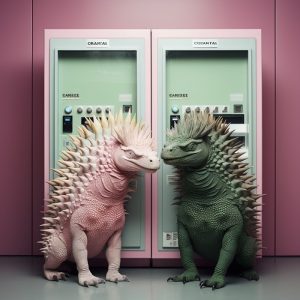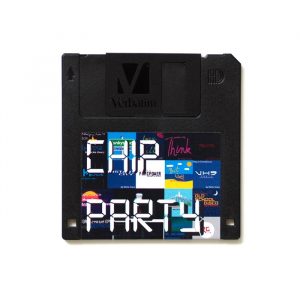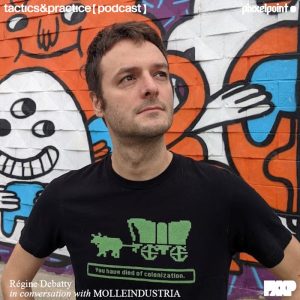Another project from the Royal College of Art Show which closed on July 5 (sluggishness has come to characterize my work these days!) This one comes from the department of Design Interactions.
The Golden Institute, by Sascha Pohflepp, not only explores the energy issue through the lens of an alternate history of the USA, but also attempts to examine how visions of the future are being created and how they can make us reflect on contemporary issues. What would the world be like today if we could go back to the decade that followed the 1973 oil crisis? To paraphrase a title of an article published on Worldchanging over a year ago: Where would the U.S. (and thus the rest of the world) be now on climate if Carter had won the election of 1980?
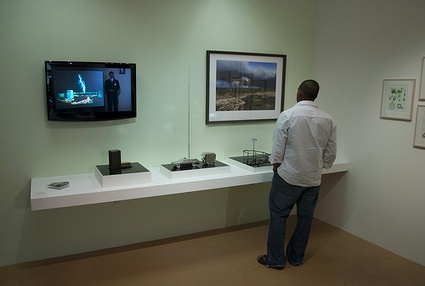 The Golden Institute installation view at the RCA Summer show last June
The Golden Institute installation view at the RCA Summer show last June
As Pohflepp explained in an essay he shared with me, technological progress is often the outcome of very specific interests and decisions, mostly economical or strategic. Networked computers are a perfect example for that, not only because of their obvious history in military use but also the much more subtle opportunities that libertarian free-market advocates saw in the emerging Internet which lead to gigantic investments in these technologies (see Fred Turner, From Counterculture to Cyberculture and Langdon Winner, The Whale and the Reactor). Other examples are the Manhattan project which lead to the development of the atomic bomb, or NASA’s Apollo program.
Pohflepp’s alternate history scenario zooms in a moment in the United States history when the fate of energy technologies could have taken a radically different turn. The neuralgic point in time is the US Presidential election of 1980 in which Jimmy Carter lost against his republican opponent Ronald Reagan. While he was governing the country, Carter implemented policies that focused on the quest for clean energy. He established generous tax incentives for solar energy and gasohol. He turned down the heating system in his office and wore sweaters. He even installed solar panels on the roof of the White House. On the day he presented the 32 panels to the press, the President declared: “A generation from now, this solar heater can either be a curiosity, a museum piece, an example of a road not taken, or it can be a small part of one of the greatest and most exciting adventures ever undertaken by the American people.”
After he won the election, Reagan almost immediately changed the nation’s course on clean energy matters. The National Renewable Energy Lab (NREL) in Golden, Colorado lost about 95% of its funding and the solar panels got dismantled soon after.
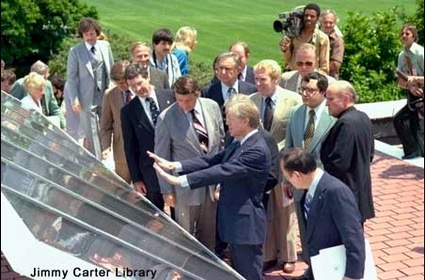 Former President Jimmy Carter and the White House solar panels
Former President Jimmy Carter and the White House solar panels
What if the road heralded by the solar panels had been taken?
In Pohflepp’s alternate history, Carter won a second term and took an even keener interest on the conservation of energy and the development of new forms of energy. NREL was developed to be an earthbound space program called “The Golden Institute for Energy”, a powerful think tank comparable to the RAND Corporation. Equipped with virtually unlimited funding to make the United States the most energy-rich nation on the planet, its scientific and technical advancements were rapid and often groundbreaking.
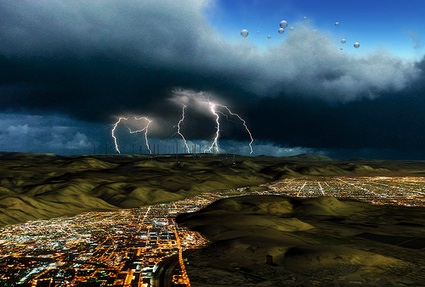 A composited landscape painting depicting the illuminated city of Golden, artificially engineered clouds and the means of weather modification and lightning harvesting.
A composited landscape painting depicting the illuminated city of Golden, artificially engineered clouds and the means of weather modification and lightning harvesting.
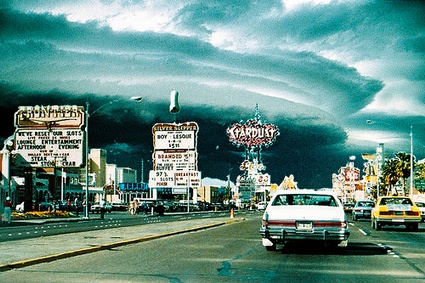 The Golden Institute for Energy plans to manipulate Earth’s climate, generating clouds or violent storms that can be harnessed for the production of electricity through wind energy and/or lightning
The Golden Institute for Energy plans to manipulate Earth’s climate, generating clouds or violent storms that can be harnessed for the production of electricity through wind energy and/or lightning
Its scope ranged from planetary engineering to the enabling of individual participation and profit from the creation of electricity. Notable projects include the development of the state of Nevada into a weather experimentation zone and the new gold rush in the form of lightning-harvesters that followed, or major modifications made to the national infrastructure in an attempt to use freeways as a power plants.
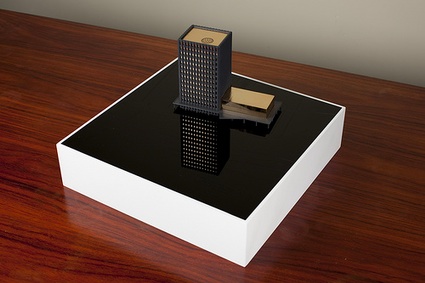 Model of the Golden Institute in 1985. Its architecture echoes both Californian corporate architecture and the original RAND Corporation in Santa Monica
Model of the Golden Institute in 1985. Its architecture echoes both Californian corporate architecture and the original RAND Corporation in Santa Monica
The project asks how visions like these are being created in the public imagination but also how they are being reflected by the economy and by individuals. In the case of weather modification, people are modifying their cars into lightning harvesters to participate in the experiments, both scientifically and commercially. The car presented in the model below is a modified Chevrolet El Camino that has been fitted with a lightning rod and various electrical equipment like variable resistors and capacitor banks to store the electricity from a lightning strike. Drivers are then able to sell the stored electricity at any one of the drive-through energy exchanges, which have opened around the zone.
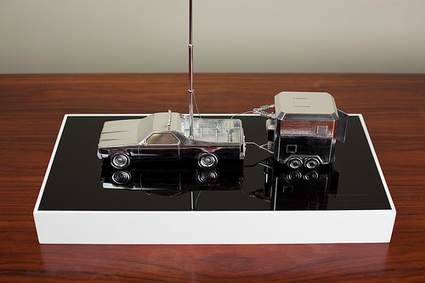 Model of a Nevada desert Lightning Harvester based on a Chevrolet El Camino
Model of a Nevada desert Lightning Harvester based on a Chevrolet El Camino
The Golden Institute found a way to modify freeways and harness the energy which would otherwise be lost through braking when a vehicle exits the freeway at a velocity of about 55 miles per hour. Now, vehicles are equipped with magnets. As they exit the freeway at high-speed, the cars are gradually slowed down employing the Lorentz force as they pass through a series of induction-coils. The coils are typically operated by a franchise like Chuck’s Café and if used effectively can get the driver a discount on a cup of coffee.
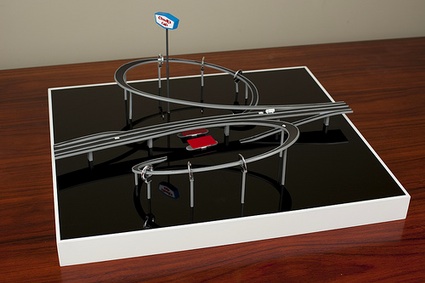 Model (1:500) of an induction loop-equipped Chuck’s Cafe, Interstate 5 near Bakersfield, CA
Model (1:500) of an induction loop-equipped Chuck’s Cafe, Interstate 5 near Bakersfield, CA
The projects presented in this rewriting of history offers an exaggerated yet serious view on current challenges which in scale may be considerably greater than the mega-scale projects of the past (see Saul Griffith, “Climate Change Recalculated”: book and video).
What logic lies behind major technological pushes of the past and how could it apply to future projects and what could we learn from the visions of an American past that never happened?
The Golden Institute for Energy is a vehicle for further investigation and new material will constantly be added. For example a running collaboration with Rick Guidice who was responsible for painting NASA’s space settlements or interviews with various thinkers about the promise of unlimited power.
Check out this six-minute corporate-style video in which senior strategist Douglas Arnd (played by Stuart Packer) explains the mission and the ambition of the Institute:
More image.
Related: Sorry, Out of Gas: Architecture’s Response to the 1973 Oil Crisis.

